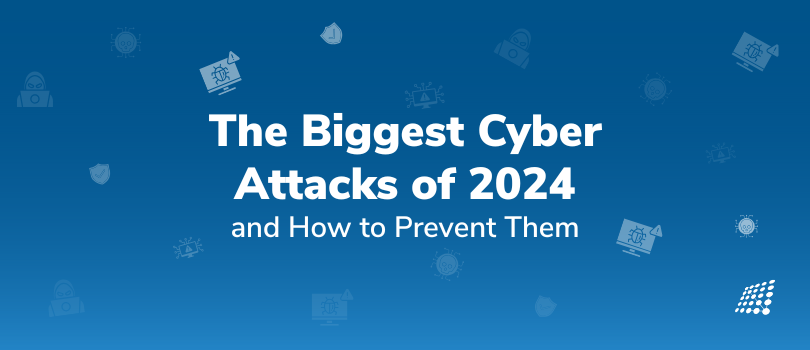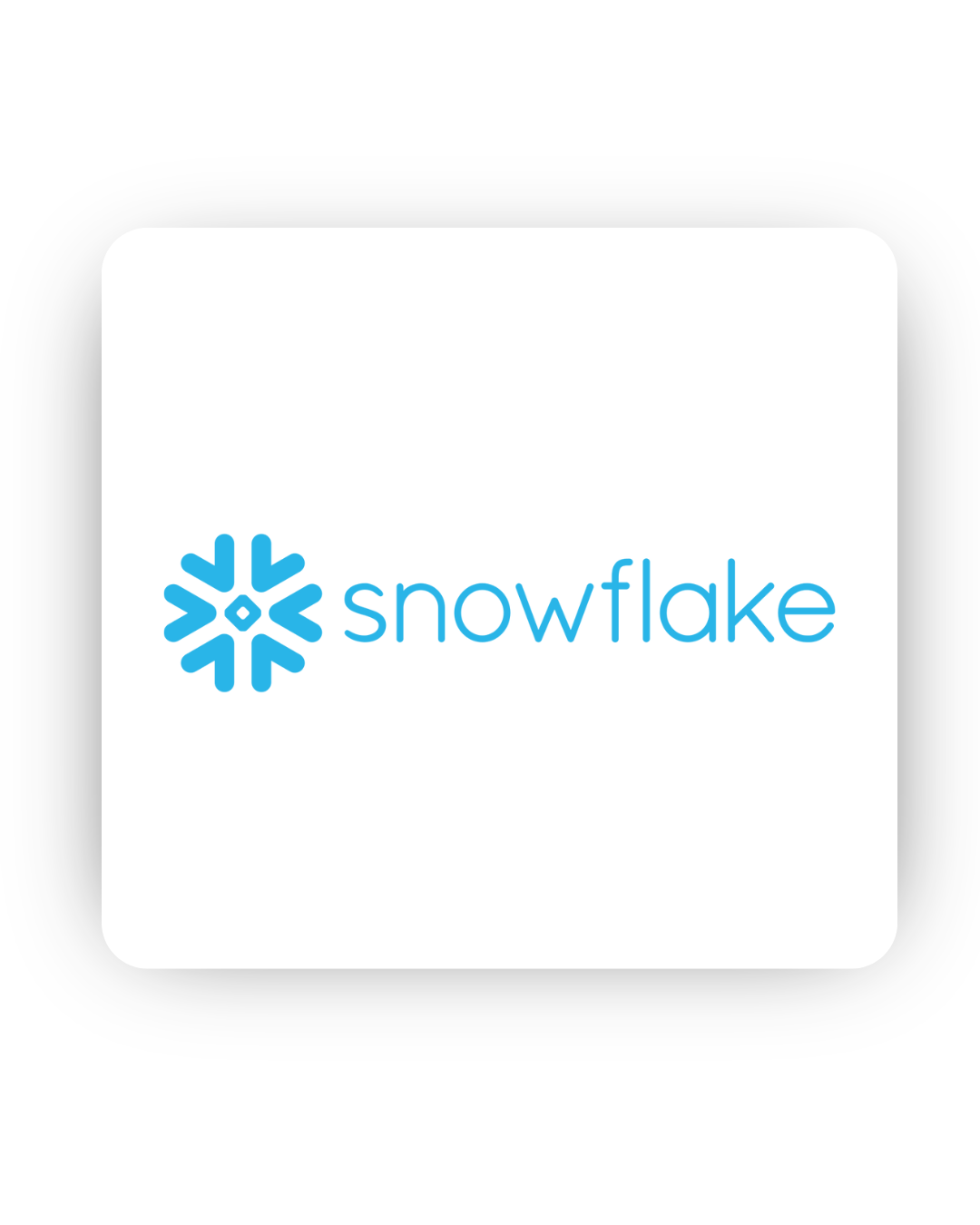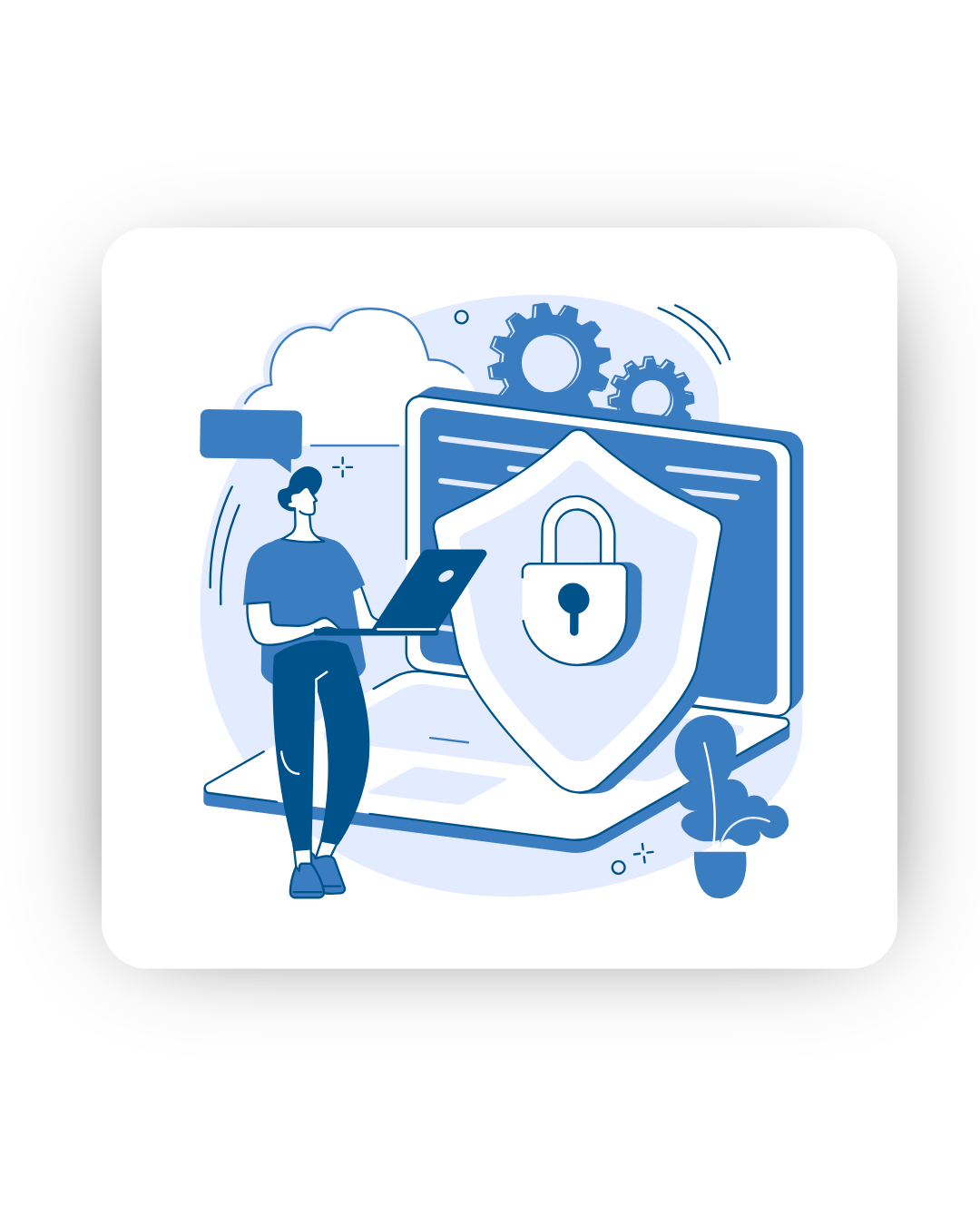How to Prevent Cyberattacks: Analyzing 2024's Major Threats

Imagine a world where every digital move you take is monitored, manipulated, or even threatened by attackers you don’t have a clue about. In 2024, the US saw 3,158 data compromise incidents, affecting over 1.35 billion individuals through breaches, leaks, and exposure. These distinct events share a common thread. Each of them exposed vulnerabilities in technology and human behavior, proving that whatever we know of digital risk is only the tip of the iceberg.
We bring you a glimpse into these devastating cyberattacks of 2024. We analyze their root causes and provide actionable strategies on how to prevent cyberattacks. By learning from these incidents, individuals and organizations can turn hindsight into proactive resilience.
This piece digs into the most crippling cyberattacks of 2024, looks at what caused them, and shares practical tips on how to prevent cyberattacks. By reflecting on these events, business owners and tech companies can strengthen their defenses, transforming past mistakes into stronger readiness.
The Biggest Data Breaches of 2024
Here are some of the biggest data breachs of 2024:
National Public Data Breach

National Public Data (NPD), which, not too long ago, was a little-known branch of Jerico Pictures, Inc., made headlines for all the wrong reasons. The cyberattack on it turned out to be the biggest data breach of 2024.
What Happened: In April, a data broker named USDoD shook things up by offering a whopping 2.9 billion records from NPD for sale on the Dark Web. According to Jerico, this situation affected roughly 1.3 billion people. The asking price? A staggering $3.5 million. It’s little wonder why criminals had their eyes on this data management firm.
Regulatory Fallout: Documents filed with the Maine Attorney General suggest that some serious penalties were on the horizon, likely including hefty fines. NPD users filed a civil lawsuit in August, claiming that the breach could’ve been anticipated and avoided with cybersecurity prevention. As if things couldn’t get any worse, in October, Jerico Pictures gave up and filed for bankruptcy, losing their customers’ trust completely due to the NPD incident.
Status of the Perpetrators: The people behind this data heist, including someone known as SXUL, are still out there, although USDoD has run into legal trouble.
What Data Was Involved: The stolen records included just about everything you can think of: Personally Identifiable Information (PII), historical addresses, social security numbers, and nicknames of the individuals listed.
How Did It Happen? The details are still a bit cloudy. The breach appears to have kicked off in December 2023, with SXUL targeting NPD’s servers using unknown methods. The compromised data started popping up on dark web forums before ultimately landing in USDoD’s hands in April.
How to Stop It?
- Put in place solid and current cybersecurity practices, including regular security checkups, intrusion detection systems, and data encryption, so no one can access sensitive information.
- Monitor networks and systems for any suspicious activity and possible weaknesses.
- Cut down on how much sensitive data is collected and stored and use anonymization methods to protect individual privacy.
- Craft and test a thorough incident response plan to effectively manage and reduce the impact of data breaches.
The $25 Million "Deepfake CEO" Heist

Let’s dive into one of the wildest cybercrimes of 2024—a scam where hackers pulled off a $25 million heist using AI-generated deepfakes to impersonate a CEO.
What Happened: The finance team at a big multinational company got a video call from who they thought was their "CEO." Jumping straight to the chase, it wasn’t him at all.
The "CEO" urgently greenlit a $25 million wire transfer to a so-called "vendor." The best part? The voice, facial expressions, and even the CEO's mannerisms were perfectly mimicked with AI tech, leaving no room for doubt.
How the Scam Worked:
- Phase 1: The hackers did their homework by scouring social media platforms like LinkedIn and Twitter for the CEO’s public speeches to train their AI.
- Phase 2: They spoofed the CEO’s email to set up the so-called "urgent" call.
- Phase 3: The deepfake tech delivered a flawless performance without glitches, awkward pauses to give anything away.
Aftermath: By the time anyone figured it out, the cash had already disappeared into offshore accounts. The firm only managed to snag back $3 million after tracing the money through 12 shell companies.
Why It’s Scary: No malware was needed. Just publicly available data and AI tools right off the shelf. This scam could target any employee with access to funds, not just the top management.
How to Stop It:
- Verify transfers in person or by phone, using pre-shared code words to make sure everything checks out.
- When looking at how to prevent cyberattacks, be wary of "urgent" payment requests and flag them for extra attention.
- Train your teams to spot AI quirks, like strange blinking during video calls.
Patelco Credit Union

Let’s talk about Patelco Credit Union—a well-known financial institution in the Bay Area that’s been around since 1936 and manages assets totaling over $9 billion. This rich history almost faced a major setback in June 2024 when they were hit by a significant ransomware attack.
What Happened: In June, Patelco discovered a major ransomware issue that raised serious alarms. Their first fraud alert showed a shocking 726,000 individual records were compromised, with the potential impact affecting over 1 million records.
What Data Was Involved: The breach risked a wide mix of sensitive info, including:
- Names
- Addresses
- Dates of birth
- Driver's license numbers
- Social Security numbers
- Credit reports
- Financial account details
How Did It Happen?
According to Patelco, the attackers first got into their network on May 23. By June 29, they had breached the databases for both customers and employees. The attack caused a shutdown of Patelco’s online banking, mobile app, and customer service centers, making it nearly impossible for the credit union to resist the demands from the attackers.
Subsequent Actions: It took them two months to alert regulators and customers about the breach. They managed to restore banking services after a tough two-week outage and provided support to customers in need of immediate access to credit reports.
Who Was Behind It?
The identity of the culprits is still somewhat unclear. However, a ransomware group called RansomHub has listed Patelco on their data brokerage platform, suggesting that they might be the ones behind the attack.
How to Stop It?
- Implement advanced security measures, including multi-factor authentication and regular security updates, to prevent cyberattacks.
- Regularly train staff on identifying phishing attempts and suspicious communications to reduce the risk of falling victim to cyberattacks.
- Use automated tools to continuously monitor systems for unusual activity and potential threats.
- Develop and practice a comprehensive incident response plan that outlines steps to take in the event of a breach.
Infosys Data Breach

On September 6, 2024, outsourcing giant Infosys McCammish Systems revealed that it had experienced a significant data breach, with the fallout potentially affecting around 6.5 million records.
What Happened: Reports indicate that the attack actually kicked off in late 2023. Hackers were busy on the Infosys network between October and November. The concerning part was the lag between when the data was taken and when it was discovered, raising questions about how long the attackers had access.
Potential Impacts: Infosys serves numerous large financial and insurance companies. This breach could have serious consequences, especially since sensitive data from major players like Wells Fargo and the Teachers Insurance and Annuity Association of America (TIAA) was exposed.
What Data Was Involved: The compromised data features a mix of sensitive information, posing a major risk for identity theft:
- Social Security numbers (SSNs)
- Birth dates
- Medical treatment records
- Email passwords
- State-issued IDs
- Driver’s license numbers
How Did It Happen?
The infamous ransomware group LockBit took credit for the attack. Linked to Russia, this group managed to deploy ransomware across the Infosys network, locking down over 2,000 devices in their assault.
How to Stop This:
- Strengthen network defenses with comprehensive firewalls and intrusion detection systems to begin with how to prevent cyberattacks.
- Regularly train employees on recognizing phishing and ransomware attempts.
- Implement a robust data encryption policy for sensitive information.
- Develop and test an incident response plan for timely action during a data breach.
Snowflake

We’ve saved the best (or worst) for last—Snowflake, a key player in cloud data hosting, has found itself in the spotlight for what some are calling the “mother of all data breaches” in 2024. This company excels in data processing and analysis and has seen rapid growth amid the surge in Big Data and AI. However, it seems their remarkable expansion and cybersecurity efforts just didn’t keep up.
What’s the Situation?
Snowflake has been tied to some of the largest corporate data breaches this year, including attacks on:
- AT&T
- Ticketmaster
- Santander
- AllState
- Mitsubishi
- Anheuser-Busch
The hacker known as UNC5537 claimed responsibility for these attacks.
How Did the Hacker Operate?
The method was surprisingly simple. To snatch valuable data from these huge corporations, all UNC5537 needed was a few stolen credentials. Even more concerning, some of these credentials had been illegally circulating for years.
What Data Was Compromised?
The breach impacted a variety of sensitive information, including:
- Personally identifiable information (PII)
- Financial and account details
- User credentials lacking Multi-Factor Authentication (MFA)
How Did It Happen?
Attackers first accessed unencrypted user credentials on a Jira instance through an unsecured device. Once they had the credentials, gaining entry into Snowflake’s cloud environment was effortless, as none of the compromised accounts had MFA enabled, making unauthorized access a breeze.
How to Stop This:
- Implement Multi-Factor Authentication (MFA) for all user accounts for cyber security prevention.
- Conduct regular security audits to identify and fix vulnerabilities before they can be exploited.
- Educate employees on strong password practices and the importance of securing credentials.
- Ensure all sensitive data is encrypted both in transit and at rest to protect against unauthorized access.
Strategies on How to Prevent Cyberattacks

The cyberattacks of 2024 revealed serious vulnerabilities but also showed patterns we can combat. Here’s how to protect your organization from similar threats based on lessons learned from these breaches:
Stop the Deepfake CEO Scam
- The Threat: AI impersonates executives for fraudulent transfers.
- Prevention Plan:
- Apply the "3-Call Rule": Confirm high-value transfers through two separate channels.
- Code Words: Use unique phrases for financial approvals.
- Detection Tools: Deploy tools like Reality Defender for real-time alerts.
Avoid Becoming the Next National Public Data (NPD)
- The Threat: Data exposure due to poor access controls.
- Prevention Plan:
- Zero Trust: Verify every access request, assuming a breach.
- Encrypt Sensitive Data: Ensure stolen data is useless without encryption keys.
- Vendor Security: Audit third-party security practices before sharing data.
Defend Against Ransomware (Patelco Credit Union)
- The Threat: Hackers lock systems until ransom is paid.
- Prevention Plan:
- Air-Gapped Backups: Keep tested offline backups.
- Detection and Response: Use tools like CrowdStrike to combat ransomware.
- Segment Networks: Separate critical systems from general IT.
- Stat: 73% of ransomware attacks exploit unpatched software (CISA, 2024). Patch updates promptly.
Secure Cloud Data (Snowflake’s Lesson)
- The Threat: Stolen credentials grant hackers access.
- Prevention Plan:
- Enforce MFA: Make Multi-Factor Authentication mandatory for all tools.
- Monitor Credential Leaks: Use services like Have I Been Pwned Enterprise.
- Least-Privilege Access: Limit permissions to what’s needed.
Close the Slow Detection Gap (Infosys Breach)
- The Threat: Attackers remain undetected for months.
- Prevention Plan:
- 24/7 Threat Hunting: Utilize AI-driven tools to spot anomalies.
- Assume Breach: Conduct regular exercises to test detection capabilities.
- Password Managers: Enforce strong, unique passwords for all users.
Personal Cybersecurity Checklist for Employees:
- Freeze your credit to prevent misuse of your Social Security number.
- Use a password manager like Bitwarden or 1Password.
- Enable MFA on all accounts; authenticator apps are more secure than SMS.
Take Action to Protect Your Organization Today!
Don’t wait for a cyberattack to expose your vulnerabilities. Our team of cybersecurity professionals is here to help you strengthen your defenses against the ever-evolving landscape of digital threats, including understanding what data loss prevention in cybersecurity means for your organization.
Contact us today to safeguard your business and ensure that you’re prepared for tomorrow’s challenges!

Why CRM is important


